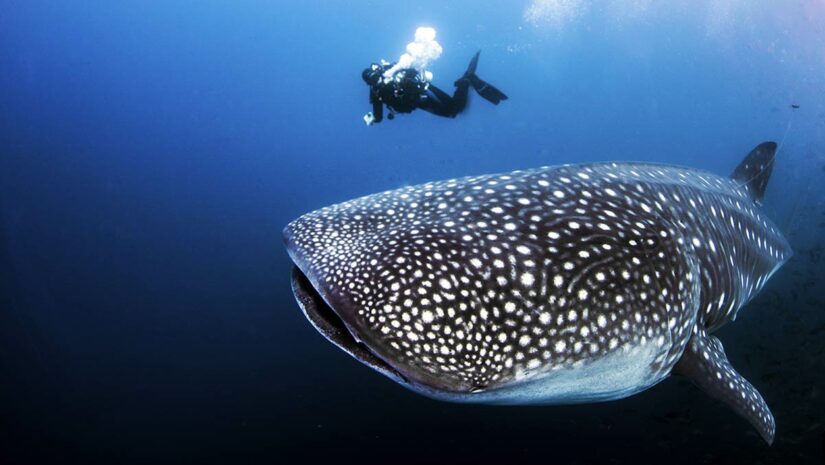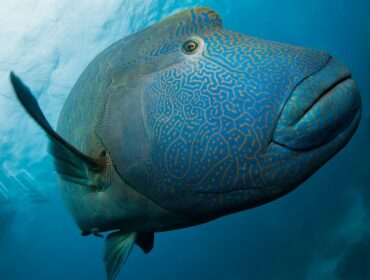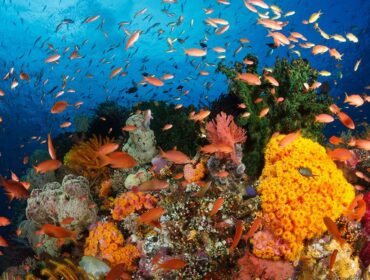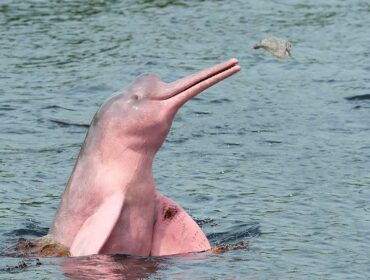Whale sharks, or Rhincodon typus, are some of the largest and most majestic creatures in the ocean. However, despite the fascination people feel toward these sharks, for many years, little was actually known about them. Today, more information is available, but there are still many mysteries to uncover about the whale shark. Ecotourism for whale sharks has increased dramatically in the last few years, which is positive in that awareness of these gentle giants is increasing, as well as the opportunity for researchers to tag and study them without disrupting their lives.
Ask an avid diver about the creatures they long to encounter on one of their dives and I can almost bet my money that seeing or diving with a whale shark is right up their on their list along with manta rays. Ask a diver who has been lucky enough to encounter one and you’ll be met with a speechless diver fumbling for words or a breathless description. Diving with one of these gentle giants is one of the top 10 dives to experience before you die.
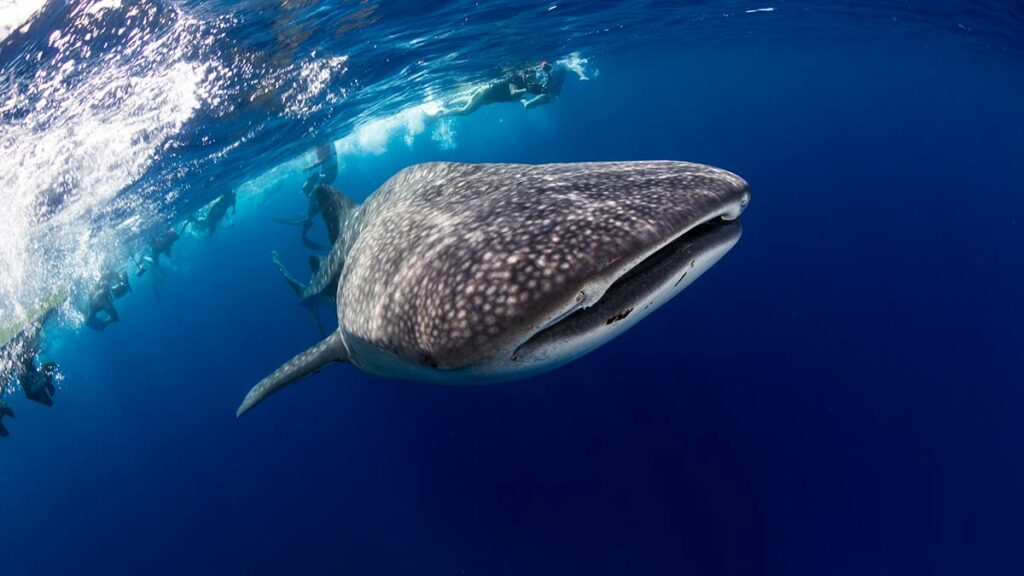
What is a whale shark?
Whale sharks are filter feeding sharks that grow to an impressive length of about 12.2 m (40 ft) and can weigh upto 13.6 tonnes. Only called a whale due to its massive stature, the whale shark is actually a fish and not a mammal. It holds the record as the largest living fish on the planet. Whale sharks allegedly originated about 60 million years ago and have an average life span of 70 years.
With white spot much like stars on the back of this massive yet magnificent fish, whale sharks are gentle and people friendly creatures unlike its other shark relatives. An absolute joy to dive or snorkel with they are quite an attraction to divers. A fan of tropical and warm oceans encounter with these gentle giants are common in places around the world like the Philippines, Thailand, off the Seychelles, Christmas Island, South Africa, Mozambique, Belize, Honduras, Mexico and Western Australia. Many dive operators in these regions offer special whale shark diving tours during the seasons sightings are common. The chances of seeing a whale shark in around Phuket in Thailand is very high between February and May every year.
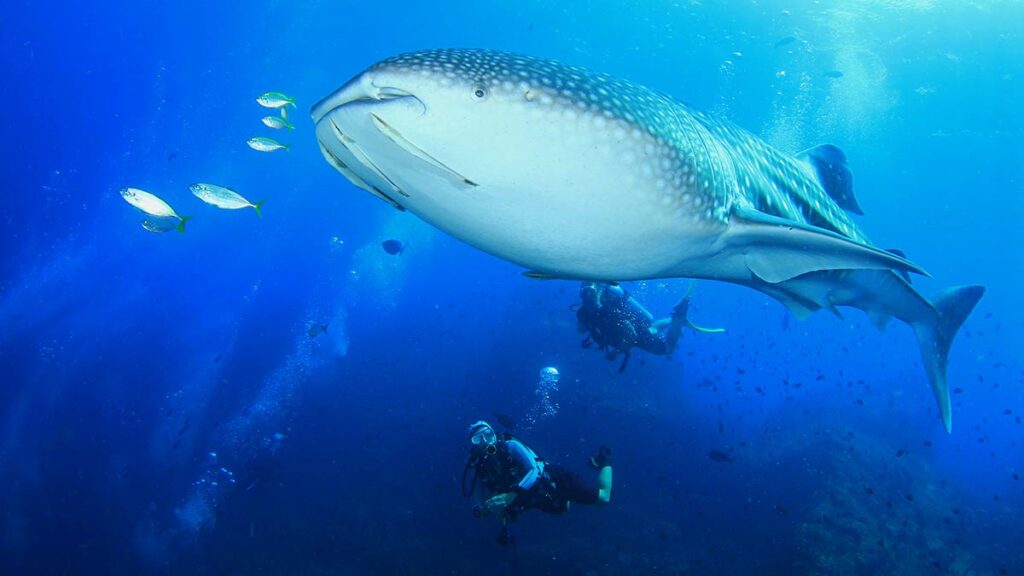
Facts About the Whale Shark
Not Whales at All
Whale sharks are not actually whales. They are a type of shark, which is a type of fish. As you can see in the photo above, they have a distinct shark profile, just like their other shark cousins. However, unlike most sharks, Rhincodon typus is a peaceful species. Instead of eating large fish, they eat plankton, algae and other tiny forms of ocean life. The shark feeds by opening its mouth and swimming forward, pumping water in. Filter pads in the mouth then separate the food from the water, and the water is pushed out through the gills.
But, physiologically, there are several easy-to-spot differences between the two species. Whale shark skeletons are made up of cartilage rather than bone, and they breathe through gills. Their tails have an upright caudal fin rather than a flat fluke like a whale. Size alone does not a whale make!
Biggest Fish in the Ocean
These sharks are often known for their massive size, and are some of the largest creatures on earth, as you can see based on the scale in this photo. In fact, whale sharks are the largest non-mammalian creature. These sharks can grow to about 32 feet long, although larger specimens sometimes grow to 40 feet or more. Generally, they weigh about 20,000 pounds, but can weigh up to twice as much.
Tropical/Sub-Tropical Species
Whale sharks live in warm or even tropical climates. For this reason, these sharks are almost always spotted near the central regions of the world, and do not venture too far north or south. These sharks often swim near coastal areas, where the feeding is the richest. They are migratory, and will move from place to place in search of food.
Live Birth
It is thought that whale sharks are born live, instead of in eggs. However, much about the reproduction of these sharks is still unknown. It’s also presumed that, when born, the sharks are tiny, and take many years to grow into their full size. They are considered mature at about 30 years old, but can live for up to 70 years, possibly even longer.
Vulnerable to Extinction
These sharks are not endangered, but they are considered vulnerable, due to the fact that they are a prized cuisine item in some parts of the world. Fortunately, many countries have now limited or banned the fishing of these sharks, which will hopefully allow their populations to recover.
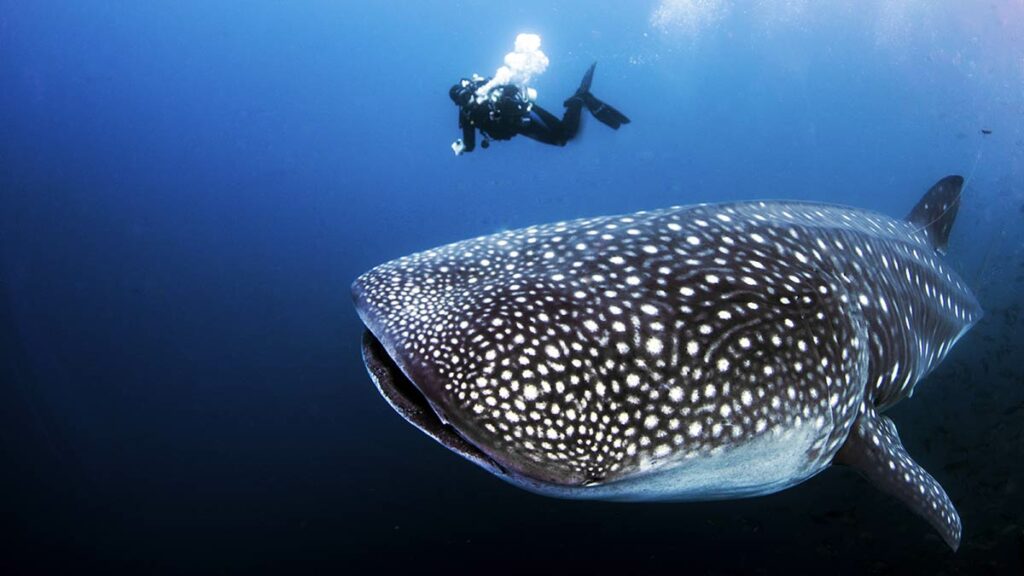
Conclusion
Swimming and diving with a whale shark is an experience of a lifetime and a must do for any diver. So the next time you’re looking for an adventure holiday put diving with the largest fish on the planet on that list and make sure to check it off in this lifetime!

